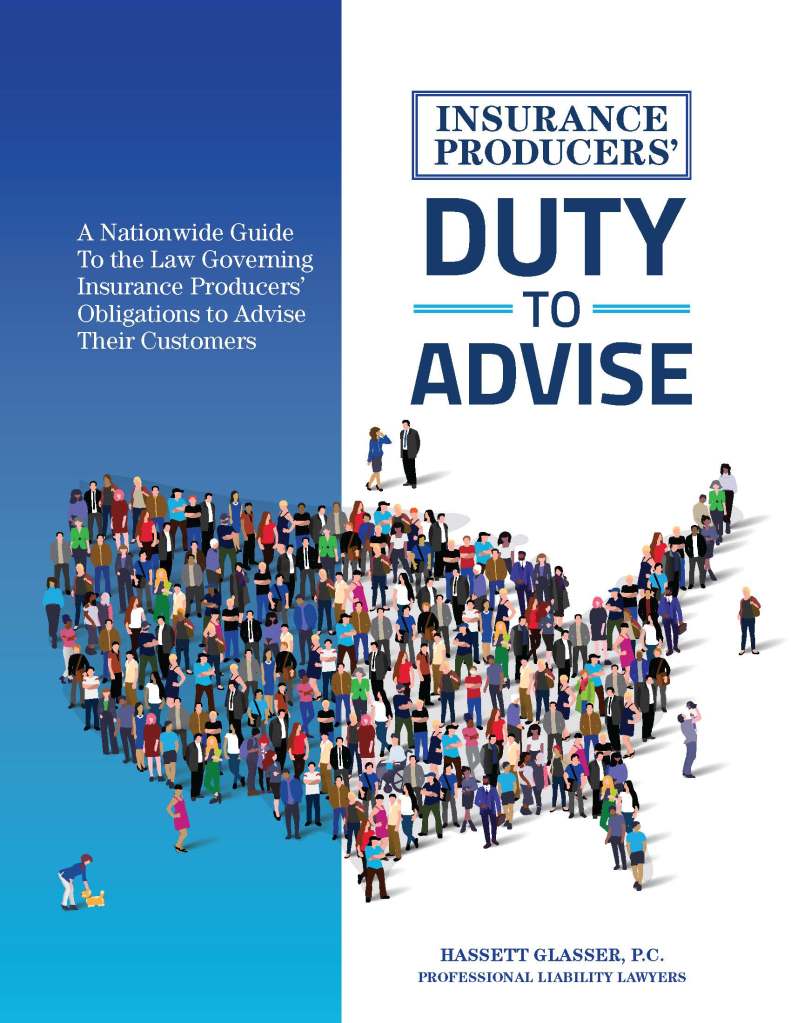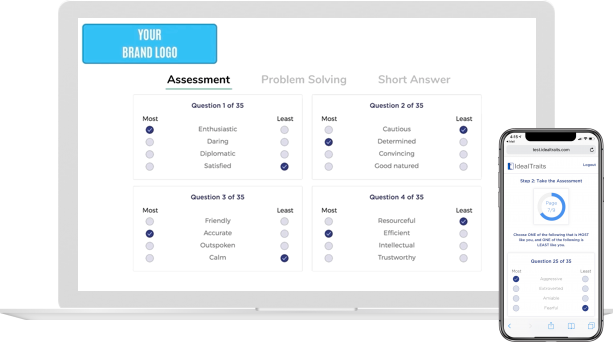Five Top Tips to Prevent the Most Frequent Errors & Omissions Claims Against Insurance Agencies
Insurance professionals face several challenges today, from staffing constraints to increasing errors & omissions (E&O) allegations. Of course, while staffing challenges can impact E&O claims, even your most respected customer service representative or your most influential producer can create an E&O exposure.
E&O claims typically arise when a client alleges negligence, mistakes, or an oversight such as a coverage mistake, which then causes financial harm. While anyone can make a mistake, the implications for insurance agencies can be difficult, ranging from damaged reputations to payments of deductibles or self-insured retentions and time-consuming and costly litigation.
If all your employees understand some common mistakes staff members make that may produce an E&O exposure or claim, you can help to prevent claims. Let’s evaluate some of the most common E&O claims lodged against agents and discuss steps your agency can take to avoid them.
Common E&O Claims in Insurance Agencies
- Failure to Procure Proper Coverage
This issue can arise in a variety of ways. The basis of the allegation is that insurance existed that could have protected the insured from an uncovered loss. These allegations are difficult to defend if agency staff failed to input proper documentation in the insured’s file. Clients often allege their agent did not secure the appropriate insurance for their needs, leaving them underinsured or uninsured after a loss. A declination form sent to the insured for any coverage you discuss that they reject, including endorsements or suggestions for increased limits, can help defend these allegations. For example, a business owner might file an E&O claim after discovering their commercial policy excluded a key coverage type, such as third-party liability protection after a cyber loss. Documentation such as proof you sent a declination form in your file that you discussed, offered and received a rejection for certain coverages or upgrades by endorsement can help defend these types of claims.
- Misrepresentation or Miscommunication
Claims regarding misrepresentation can stem from unclear explanations about policy limits or exclusions. For instance, a client may claim they were misled about the extent of coverage, leading them to assume the policy would cover certain risks when it would not. Even unintentional miscommunication can result in legal trouble.
- Failure to Renew a Policy
This happens surprisingly often. Three times II have personally had commercial policies that should have been renewed fail to renew. In one instance, the newer agent had no internal system for ensuring they knew what policies were pending renewal. In the other instance, that system failed. Obviously, when a policy doesn’t renew on time and a claim occurs during the lapse, the agency may be held responsible for the resulting loss.
- Gaps in Coverage Between Underlying Policies and Umbrella Policies
Very often in this difficult market you will have difficulty patching together excess coverage towers on larger accounts. However, whether a large or smaller insured, ensuring the underlying limits match the required limit on the excess policy is critical. Other issues can occur, as well, such as not adding uninsured/underinsured coverage to the excess policy or failing to add a new vehicle or piece of equipment or a new location to the excess schedule when required. Contractors and long-haul trucking firms switch equipment frequently, so it may help to set a diary to semi-annually or quarterly remind these accounts to report any changes to you to ensure proper coverage. It’s as simple as developing an email template that you can send automatically. That type of communication helps greatly if an E&O claim arises.
- Administrative Errors
Simple mistakes, such as incorrect data entry or selecting the wrong effective date, can create substantial consequences. For instance, a typo in the coverage amount on a client’s policy could lead to insufficient limits for losses, prompting an E&O claim. Take that last step to ensure a thorough review of all new or renewal policies. Do not rely on the carrier to always get it right. Carriers make mistakes. Carriers face the same employment challenges as other organizations. They may add endorsements or exclusions that limit or eliminate coverage or attach a vaguely worded endorsement that impacts coverage. When these issues arise, if you catch them and have the insurer correct them, you can avoid an E&O claim. When these coverage deficiencies cannot be solved by endorsement, educating your insured about the reduced or restricted coverage can help protect you when properly documented.
More On How to Prevent Insurance Agency E&O Claims
Preventing E&O claims starts with proactive measures, clear communication, and a commitment to accuracy. Here are the steps your agency can take to reduce the risk.
Develop and/or Update Your Procedures Manual
When all employees understand documentation standards and other expectations, you can avoid an E&O claim. If each employee is “doing their own thing,” this is when errors can arise and slip through the cracks. The Big “I” offers a procedural manual template at this link to Big “I” members. It is vital that it is a “living document,” updated regularly when carriers make changes or the agency outsources an activity, and not sitting in someone’s inbox.
Offer Frequent Training and Upskilling
Whether you develop training in-house, rely on your carriers, or rely on your state association to offer training, regular upskilling is critical. At every staff meeting, spend five- or ten-minutes discussing E&O risks and how to avoid them.
E&O carriers report an uptick in E&O claims both in frequency and severity. Avoid that trend with on-point training and education. Mentorship programs can help, as well. National Big “I” has a mentorship program available for emerging talent. Visit this link for more information.
Visit your state Big “I” association often for updated learning information.
Use Checklists and Quality Control Procedures
Rely on Big “I” and other sources for coverage checklists to avoid failure-to-offer claims. Review processes to double-check all applications, renewals and policy changes. For example, before renewing a policy, notify the client about the pending renewal and confirm their renewal preferences. Always have clients sign both new and renewal apps, best-practice advice from Swiss Re.
Consistency using standard procedures helps avoid many problems.
Communicate Clearly, Frequently and Transparently
Communicate clearly. Always avoid talking over your client’s head. Avoid acronyms or insurance jargon. Take time to explain policies terms in the language the insured understands. Telling your client, “Oh, by the way, they added a warranty clause” is different from explaining the effect of that warranty clause should a loss occur because your insured failed to adhere to it.
Check in with your clients at least twice a year. With commercial clients, large payroll shifts, income changes and employment numbers can change estimated premiums. Frequent communication helps build bridges between you and your insured. If you waltz into their office once a year with a box of candy, but they never hear from you until the next holiday season, you leave a wide-open door for your competitors.
Offer Annual Coverage Reviews for All Clients
Proactively schedule annual policy review meetings with every client. While this may seem impossible, it is really a necessity in today’s inflationary and changing environment. People often upgrade their home, reconstruction costs rise (think tariff impacts) and contractors find new ways to earn income. These reviews allow you to assess changing risks, cross-sell new coverages and identify any gaps in their insurance program. For example, if a client recently started a home-based business, an annual review gives you the opportunity to recommend appropriate endorsements or coverages.
Invest in Your Own E&O Insurance
Are you safeguarding your agency and your reputation? An E&O event can have a negative impact on your agency, not just in terms of your deductible, but the administrative time taken to respond to claims and the hit you can incur to your agency’s reputation. Having experienced agency professional liability adjusters handling your claims can mean peace of mind if you do face a claim. Reach out to your state Big “I” association’s E&O program manager for more information about our E&O programs.
Document is the Star of the Show in any E&O Litigation
Always keep detailed records of client interactions, including emails, phone calls, and policy recommendations. Use clear, written confirmation when clients decline specific coverages. For example, if a client opts out of flood or earthquake insurance, ask them to sign a declination to acknowledge their decision. The Big “I” offers standard coverage declination templates for Big “I” members at this link. Even if the insured never returns it, proof you sent it to your insured immediately after your conversations can help defend any claim of this type that arises.
And remember, your documentation is “The star of the show” when it comes to defending your agency, according to Mary LaPorte, owner of LaPorte Consulting, who helps design many of our Big “I” trainings available through your state association and offers agency audits.
Early in my career, my managers repeatedly said, “If it’s not in the file, it didn’t happen.” Never get caught without documentation, whether it is an email to your client or a thorough note documenting whom you talked to (precisely, not “spoke with the insured”), what you said and how they responded. These simple fixes can help you avoid an agency E&O claim
Don’t forget—you and your staff can be blameless and still face an E&O claim. If you know you made a mistake or your insured accuses you of an oversight, do not panic. Reach out and rely on your E&O carrier’s claims staff to guide you through the process.
Originally published: June 13, 2025
__________________________________________________________________________________
Copyright © 2025, Big “I” Virtual University. All rights reserved. No part of this material may be used or reproduced in any manner without the prior written permission from Big “I” Virtual University. For further information, contact [email protected].









